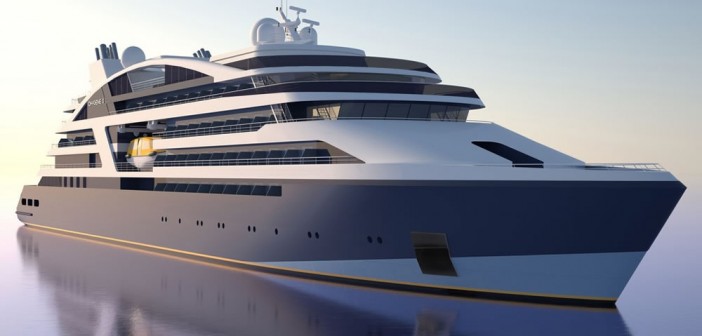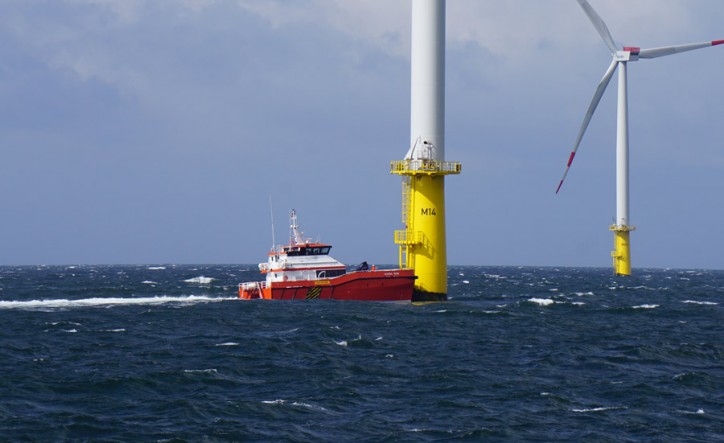- Weak oil prices slash spending by big energy companies
- After relying on oil sector, Vard targets cruise ships
- Other companies looking at supporting offshore wind farms
- Singapore marine, offshore engineering output falls to $14.5 bln
Marine and offshore engineering companies are turning to cruise ships, fishing vessels or even sea-based wind farms to keep their earnings afloat as weak oil prices slash new spending by big energy companies.
Many companies that have focused on building or chartering vessels to support offshore drilling and exploration have seen orders and charter rates tumble following a two-thirds drop in oil prices since mid-2014, pushing them to diversify.
Singapore-listed Vard Holdings last month signed a letter of intent to build four luxury expedition cruise ships for French company Ponant. The vessels are designed to carry thrill seekers to the polar regions and remote ports that are inaccessible to most ships.
Vard has over the last few years mainly catered to the energy sector, but wants to grow its non-oil business that includes research and naval vessels.

The exterior of the new 10,000 gross ton expedition ships for Ponant has been designed by Sterling Design International - Image: SDI
"We need to - and we want to - reactivate that and make that a much bigger part of the business, now that the oil and gas market is down," said Holger Dilling, an executive vice president at Vard, which is majority-owned by Italian ship builder Fincantieri.
Oil and gas made up 80 percent of the business over the past five years, but this could fall to 40 percent over the next two years, Dilling said.
Another problem for the industry is a glut of offshore supply vessels (OSVs) that serve oil rigs.
The number of such vessels rose 83 percent between January 2008 and June 2015, whereas the number of drillships, jackups and semisubmersibles increased only 38 percent, IHS Energy data shows.
The global OSV fleet will rise by another 9-18 percent this year, on top of the 4,400 ships already operating, according to ship broker Banchero Costa.
Charter rates have dropped by two-thirds for some vessels in the last two years, from between $17,000-$20,000 a day in March 2014 to around $6,000 now, according to shipping services firm Clarkson.
With so many vessels lying idle, three Australian companies, including shipbuilding project management firm Silverstar Marine, have partnered to convert some into luxury explorer vessels complete with a helideck in order to target well-heeled customers.
CLEAN ENERGY
"It's very important for (firms) to diversify, given that most industry players are expecting lower-for-longer oil prices," said Joel Ng, an equity analyst at KGI Fraser Securities. "It will not be enough to offset the losses from oil and gas, it will just cushion a bit."
The offshore renewables industry is also fast becoming a target market as countries such as China boost their clean energy capacities.
Singapore-based Ezion Holdings, which owns service rigs and liftboats used in offshore construction and maintenance projects, signed a joint venture in February with a Chinese state-owned enterprise to support offshore windfarms.

China plans to increase its installed offshore wind capacity to 30 gigawatts by 2020 from just 2.5 gigawatts at present, according to brokerage DBS Vickers Securities.
The broker said a liftboat could help install 200 megawatts of offshore wind capacity a year, meaning that up to 30 liftboats could be required over the next five years.
Windfarm support vessels and a luxury river cruise vessel are among new contracts won by Triyards Holdings, which has branched out since its listing in 2012 when its order book was almost 100 percent from oil and gas clients.
"It has always been our strategy to have a diversified pipeline of new building projects," Triyards, majority-owned by oilfield service firm Ezra Holdings, said in an email.
It is one of many shipbuilding and offshore support firms that operate out of hub Singapore. Output from the marine and offshore engineering sector dropped 21 percent to S$19.6 billion ($14.5 billion) in 2015, preliminary data from the Economic Development Board shows.
"Singapore firms face competition from other contract hungry shipyards and operators that already have orders to build and provide ships to wind farm projects," said Ralph Leszczynski, head of research at ship broker Banchero Costa in Singapore.
Source: Reuters / Reporting by Aradhana Aravindan and Keith Wallis in SINGAPORE; Editing by Ed Davies and Richard Pullin